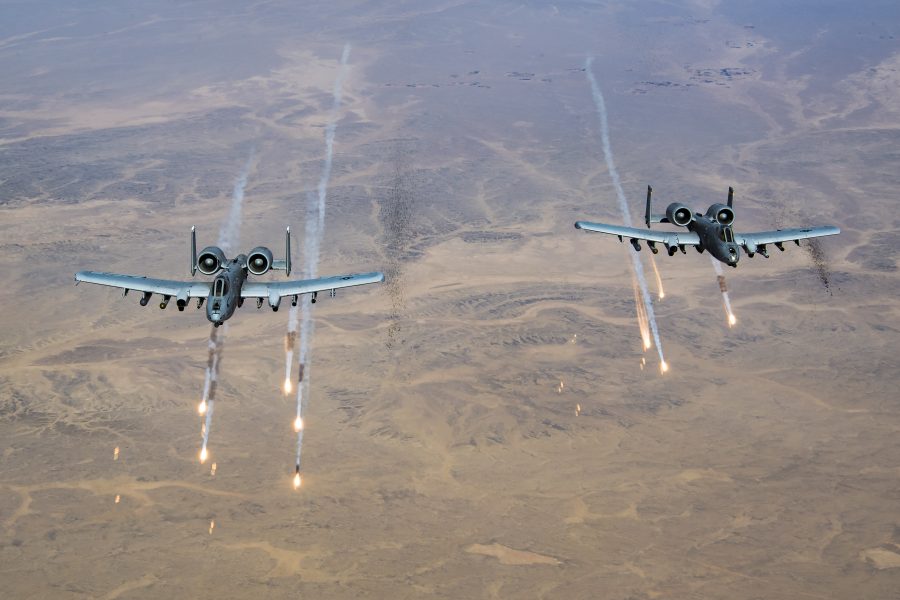The number of U.S. airstrikes in Afghanistan has increased despite ongoing peace talks with the Taliban aimed at ending the 19-year-old war.
U.S. Forces-Afghanistan in October reported that airstrikes supporting Afghan forces on the ground have increased from the second to third quarter—a step that is permitted under the February agreement with the Taliban, according to the Special Inspector General for Afghanistan Reconstruction quarterly report released Nov. 5. Enemy-initiated attacks in Afghanistan jumped 50 percent in the same period, from July to September, when compared to the previous quarter of April to June.
“The Taliban is calibrating its use of violence to harass and undermine the (Afghan National Defense and Security Forces) and [the Afghan government] but [to] remain at a level it perceives is within the bounds of the agreement, probably to encourage a U.S. troop withdrawal and set favorable conditions for a post-withdrawal Afghanistan,” the Defense Department said in the SIGAR report.
If the Taliban violence continues at this “unacceptably high” rate, it would undermine the agreement, the DOD said.
Air Forces Central Command in the spring stopped publicly reporting Afghanistan airstrikes, citing the ongoing discussions with the Taliban. The last publicly available tally, released in early March, showed that the pace of airstrikes was already higher than in previous years.
As of Sept. 30, the Afghan Air Force had 179 total aircraft, with 159 available—four more than earlier in the year, though two of the heavily used Mi-17 helicopters crashed in October, killing nine Afghan forces.
The Afghan Air Force’s flight hours also increased by about 35 percent in the third quarter compared to the previous period. The USAF-led Train, Advice, and Assist Command-Air reported the jump was due to an increase of Afghan Air Force trained aircrews, coupled with a “growing necessity to fly because of reduced coalition support due to the troop drawdown,” SIGAR wrote. “The AAF have a greater operational need but also a greater capability.”
The AAF and the Afghan special forces have repeatedly been highlighted as key components of the ANDSF. The Afghan National Army Special Operations Corps completed 98 percent of their offensive operations in the third quarter without any U.S. or coalition help, with many of them integrating Afghan intelligence, surveillance, and reconnaissance support and AAF air strikes. The Afghan Special Security Forces conducted 1,111 ground operations in the same time period, more than double the amount conducted in the third quarter last year.
